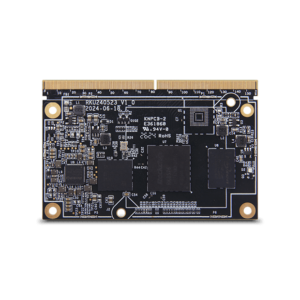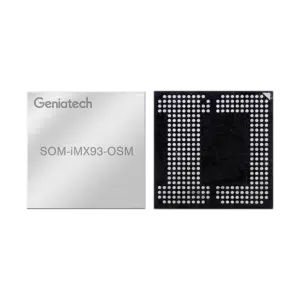Designing with Computer on Module: A Complete Guide for Developers
Designing with Computer on Module: A Complete Guide for Developers
Blog Article
The rapid growth of engineering has driven significant improvements in embedded systems, one of which is the imx8 system on module Acting as a connection between custom electronics and off-the-shelf segments, the SoM is redefining how designers approach embedded system design. That blog shows the primary understanding of a Process on Component and their rising programs in several industries.

What's a Process on Component (SoM)?
A System on Component (SoM) is just a lightweight, ready-to-use board that combines all of the key components of something on a single module. That on average includes the processor, memory, power management products, and often extra peripherals like Wi-Fi or Ethernet. Unlike a conventional single-board computer, an SoM does not come with connections and program ports pre-installed, meaning it must be combined with a company table to create an entire system.
Built to improve growth workflows, the modular nature of an SoM enables designers to miss out the complicated process of planning and assembling every person aspect from scratch. By adopting an SoM, companies may focus more on the application-specific characteristics of their products.
Advantages of Using System on Element
The integration of an entire system on one module gifts many benefits. First, it significantly reduces the time required for item development. Pre-tested segments ensure balance, saving months of benefit engineering teams.
Furthermore, the scalability of an SoM allows corporations to regulate performance degrees predicated on challenge requirements. For instance, a low-cost alternative can simply range in to a high-end item by trading the model in the component while keeping the copyright table design. This method decreases design risks while marketing long-term cost-efficiency.
Last but most certainly not least, the stability of an off-the-shelf element guarantees high compatibility with current tools and frameworks, making it well suited for both small startups and large enterprises trying to hit the industry quickly.
Critical Programs of SoM in Stuck Techniques
The usage of Process on Adventures spans a few high-demand industries including however, not limited to medical devices, automation, and customer electronics.
Medical Units
Reliability and reliability are paramount in healthcare. Program on Segments with secure running abilities are embedded in screens, imaging units, and lightweight diagnostic tools.
Industrial Automation
Powerful and energy-efficient, an SoM is essential for industrial get a grip on techniques and autonomous robotics. Their scalable structure supports high-speed information processing and IoT connectivity.
IoT Devices

Customer items like intelligent thermostats, wearable products, and also house assistants combine an ultra-compact Process on Module for smooth performance.
The System on Module remains to get footing because reduced complexity and usefulness, cementing it self as a future-proof answer in the embedded systems sphere. Industry leaders already are leveraging these adventures, and their scope is expected to increase even further as engineering evolves.
Report this page